In the realm of modern office design, the gravitation towards natural materials signifies a broader shift towards sustainability, wellness, and aesthetic appeal in workspace environments. Among the myriad of choices available, timber veneer emerges as a standout option for infusing natural beauty with practical functionality. This preference for natural materials isn’t just a fleeting trend but a reflection of a deeper appreciation for the connection between nature and well-being, particularly in spaces where people spend a significant portion of their day.
Timber veneer, with its rich textures and inherent warmth, offers an ideal solution for creating inviting and dynamic office interiors. Its versatility and sustainability make it a preferred choice for designers and architects aimhttps://www.forestproducts.com.au/products/timber-veneer/ing to craft spaces that are not only visually appealing but also environmentally conscious and durable over time. As we delve deeper into the advantages of timber veneer, it becomes evident why it’s considered an essential element in the contemporary office design palette.
The Aesthetics of Timber Veneer in Office Spaces
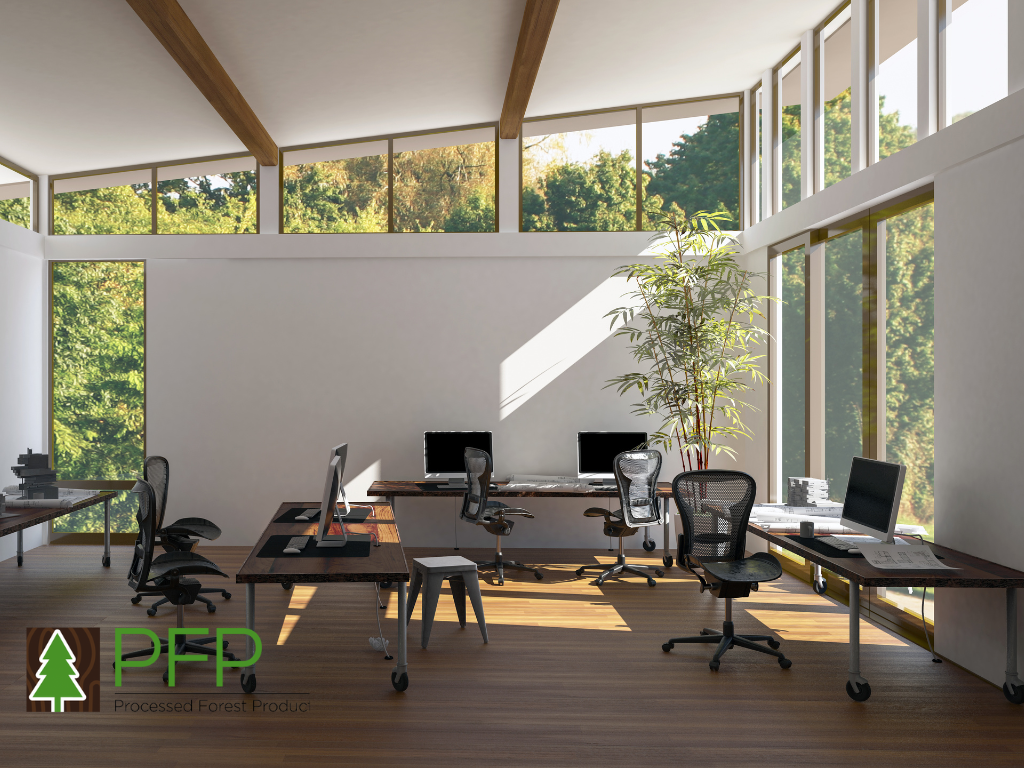
Visual Appeal
Timber veneer brings an unparalleled warmth and elegance to office environments, transforming mundane spaces into areas of natural beauty and sophistication. The unique grain patterns and rich color variations of veneer panels add depth and character to interiors, fostering a welcoming atmosphere that can enhance employee morale and client perceptions. The aesthetic flexibility of timber veneer allows it to seamlessly blend with various design themes, from rustic charm to modern minimalism, making it a universally appealing choice.
Design Versatility
One of the most compelling attributes of timber veneer is its design versatility. Available in an array of finishes, grains, and colors, veneer provides designers with the creative freedom to customize office aesthetics according to specific brand identities or stylistic preferences. Whether it’s the subtle elegance of birch or the bold statements made by exotic woods, timber veneer can be tailored to suit any design vision, enabling a bespoke approach to office styling.
Functional Benefits of Timber Veneer in Offices
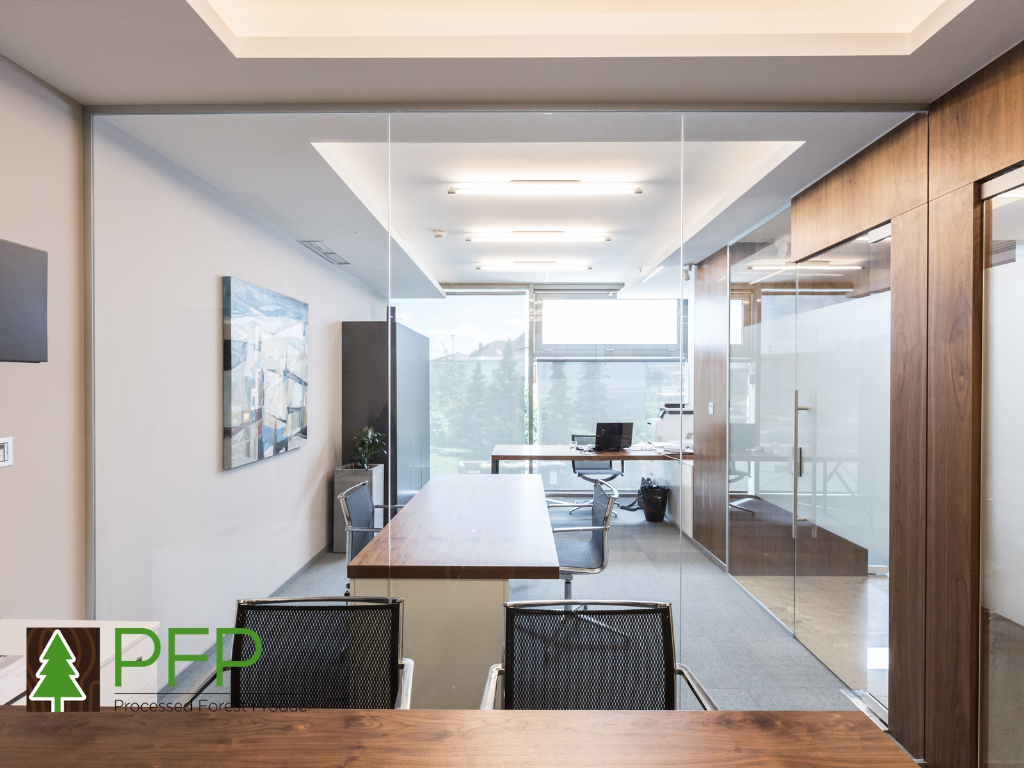
Durability and Maintenance
Contrary to common perceptions, timber veneer is highly durable and capable of withstanding the rigors of daily office use. Its construction, involving thin layers of natural wood bonded to stable substrates, ensures longevity and resistance to warping or splitting, challenges often faced with solid wood in fluctuating office environments. Maintenance of veneer surfaces is straightforward, requiring only regular dusting and occasional polishing to retain their luster, making them an ideal choice for high-traffic areas.
Acoustic Properties
The acoustic benefits of timber veneer are especially valuable in modern office layouts, which often feature open-plan designs that can propagate noise. Timber veneer panels can significantly improve sound insulation, absorbing and diffusing sound waves to create quieter, more focused work areas. This acoustic dampening effect contributes to a more conducive work environment, reducing distractions and enhancing productivity among employees.
Sustainability and Timber Veneer
Embracing sustainability, timber veneer stands out as an eco-friendly choice in office design. Its production maximizes the use of wood from a single tree, extending the material’s yield far beyond what solid wood can offer and minimizing waste. Additionally, many timber veneer products are sourced from sustainably managed forests, supporting conservation efforts and reducing the environmental impact of deforestation. The choice of timber veneer not only reflects a commitment to aesthetic excellence but also embodies a responsible approach to environmental stewardship, aligning with the values of modern businesses that prioritize sustainability in their operations and corporate ethos.
Sustainability and Timber Veneer
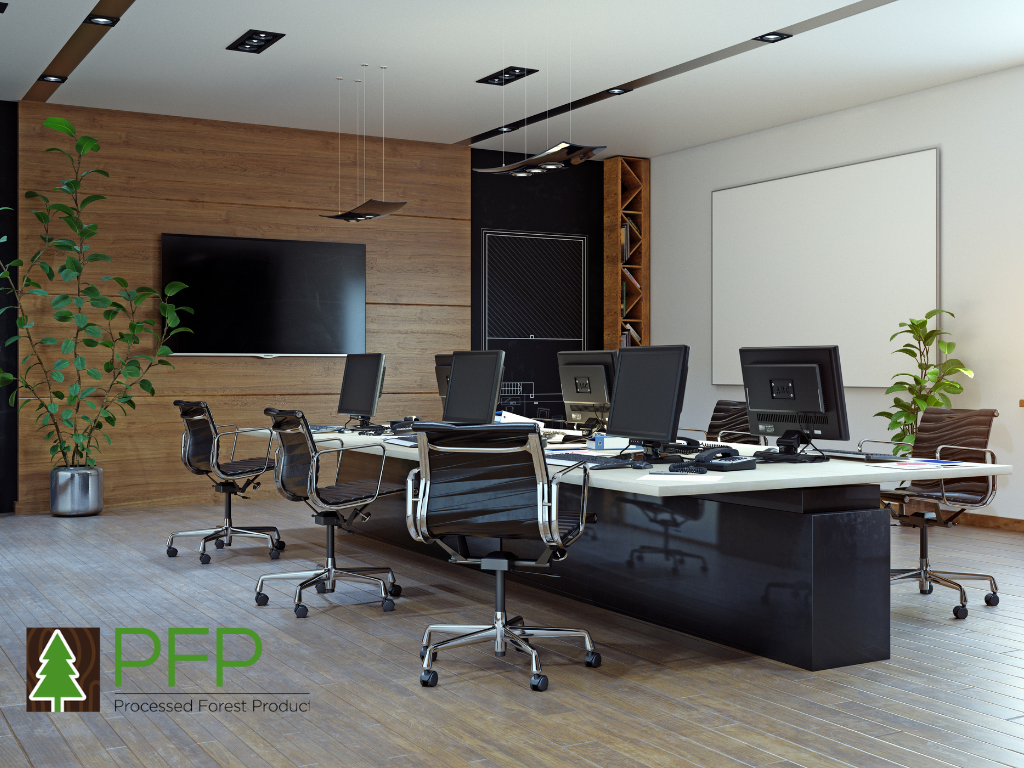
Eco-Friendly Choice
Timber veneer stands as a beacon of sustainability in the material world, particularly appealing in today’s eco-conscious market. Its resource efficiency is unmatched; a single log of wood can produce veneer sheets to cover vast areas, unlike solid wood, which can be limited by the size of the original timber. This efficiency significantly reduces the demand on forests, contributing to the conservation of global wood resources. Furthermore, the process of creating timber veneer often utilizes woods from fast-growing, sustainable forests, and even the less visually appealing parts of trees, ensuring every piece is used purposefully and minimizing waste.
Certifications and Standards
For businesses aiming to make responsible choices, selecting certified timber veneer is crucial. Certifications such as FSC (Forest Stewardship Council) or PEFC (Programme for the Endorsement of Forest Certification) guarantee that the wood has been sourced from sustainably managed forests. These standards not only ensure environmental stewardship but also support ethical labor practices and community benefits. When choosing timber veneer, looking for these certifications can help companies align with their sustainability goals and assure customers of their commitment to ethical practices.
Applications of Timber Veneer in Office Design
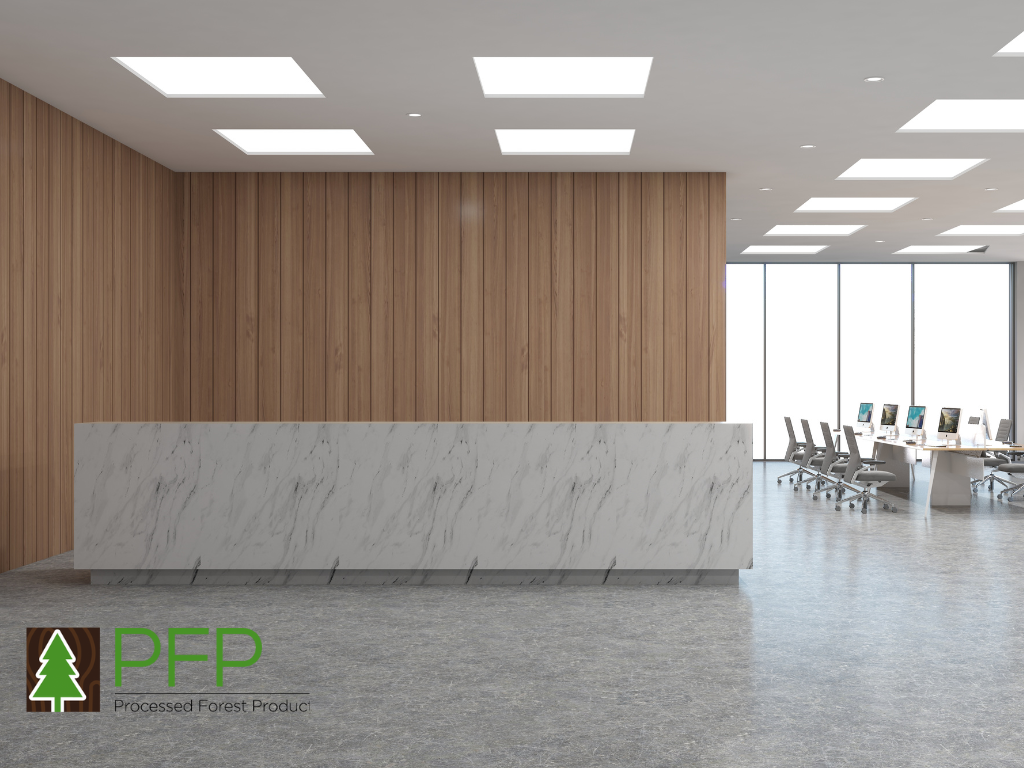
Reception Areas
The reception area acts as the face of an office, setting the tone for visitors and employees alike. Incorporating timber veneer in entryways and reception desks can create a strong, positive first impression, combining the warmth and natural elegance of wood with the sophistication of modern design. The versatility of veneer allows for customization to reflect the company’s brand, making every entrance memorable and inviting.
Workspaces and Private Offices
Timber veneer finds a harmonious balance between aesthetic appeal and functionality in workspaces and private offices. Its use in desks, cabinetry, and paneling adds a touch of natural beauty, making these areas more welcoming and conducive to productivity. The material’s durability ensures it can withstand the daily wear and tear of office life, maintaining its elegance over time.
Meeting and Conference Rooms
Professional settings like meeting and conference rooms benefit significantly from the inclusion of timber veneer. Tables and wall panels adorned with veneer not only enhance the room’s functionality but also elevate its aesthetics, fostering an environment of professionalism and creativity. The material’s acoustic properties further benefit these spaces by improving sound quality, making discussions more effective.
Break Rooms and Common Areas
Timber veneer contributes to a cohesive office design theme by extending its natural charm to break rooms and common areas. These spaces, designed for relaxation and informal gatherings, are enriched with the warmth and comfort that timber veneer brings, promoting a sense of community and well-being among employees.
Incorporating Timber Veneer with Other Materials
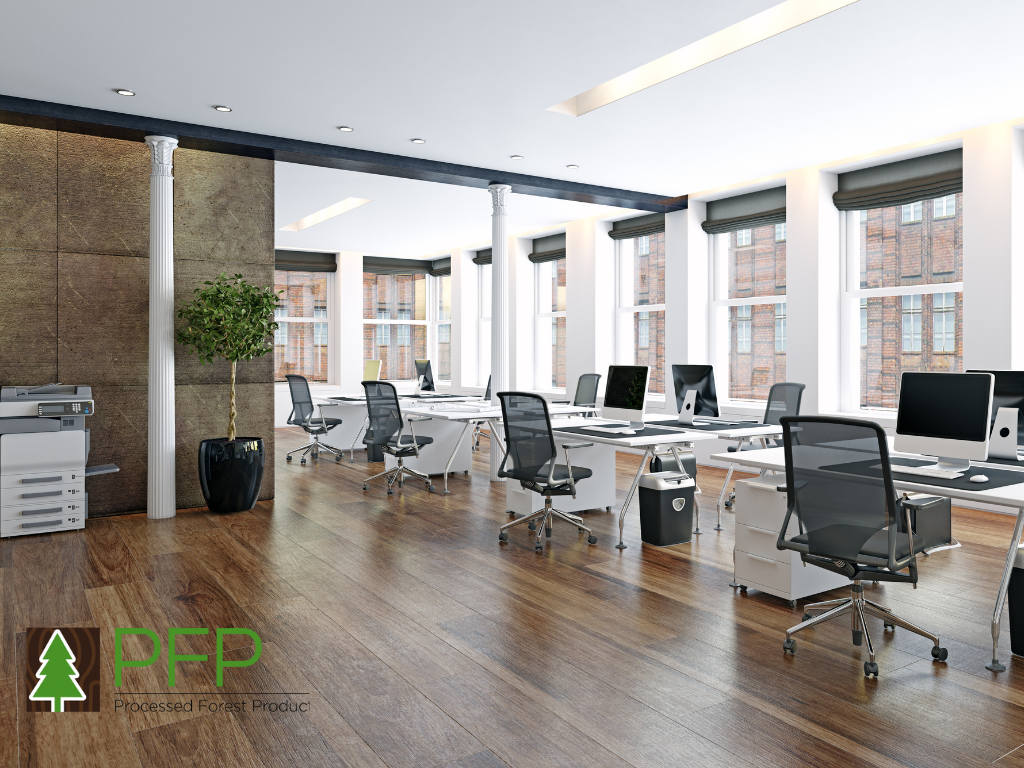
Material Combinations
The integration of timber veneer with other materials such as metals, glass, and textiles opens up a world of contemporary design possibilities. Combining the organic texture of wood with the sleekness of metal or the transparency of glass can create a dynamic and modern office interior. This mix of materials not only adds visual interest but also allows for a flexible design approach that can adapt to changing trends and personal preferences.
Balancing Elements
Achieving a balanced and harmonious interior with timber veneer involves thoughtful consideration of color, texture, and proportion. Pairing the warm tones of wood with cooler materials like metal or glass can create a pleasing contrast, while the use of textiles can add softness to the overall design. The key is to maintain a cohesive look that reflects the company’s identity and values, creating a workspace that is both functional and aesthetically pleasing.
Design Considerations and Best Practices
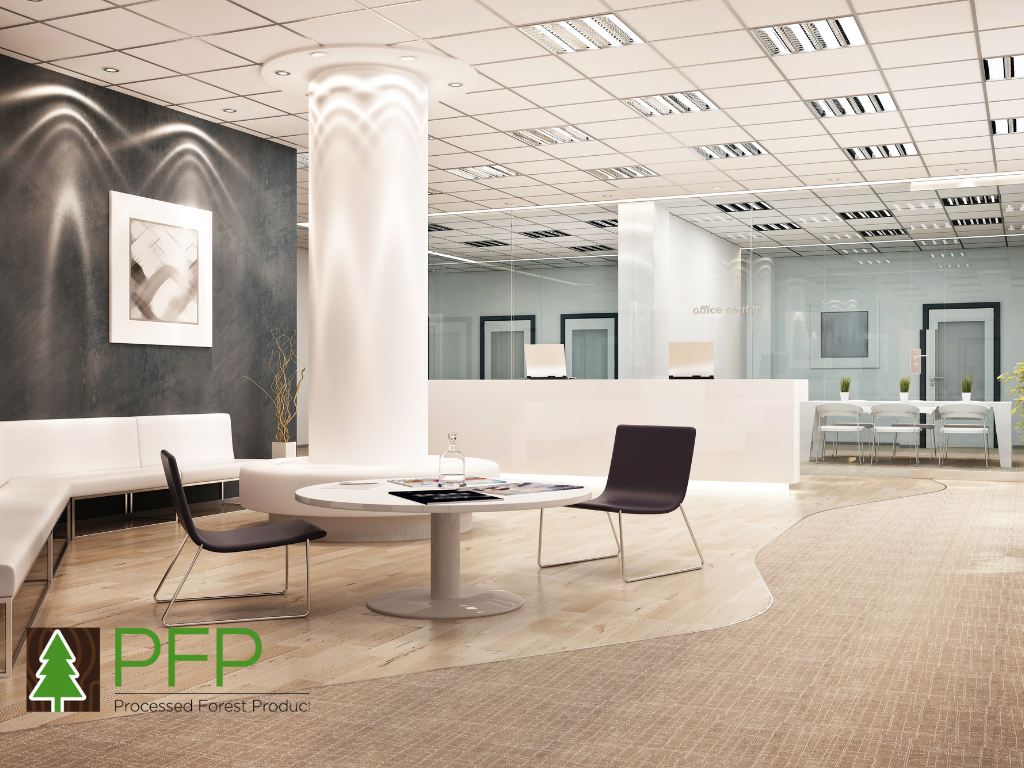
Color and Lighting
When integrating timber veneer into office design, selecting the right color and lighting is crucial for showcasing its natural beauty and enhancing the overall ambiance of the space. The color of the veneer should complement the office’s color scheme, creating a warm and inviting environment. Lighter veneers can make small spaces appear larger, while darker veneers add a touch of sophistication and depth.
Lighting plays a pivotal role in accentuating the natural grain and texture of timber veneer. Natural light can highlight the veneer’s richness, so positioning veneered furniture or panels near windows is ideal. For artificial lighting, consider using LED lights that offer a warm, soft glow, enhancing the veneer’s natural patterns without causing glare or fading.
Space Planning
Effective space planning is essential to maximize both aesthetics and functionality when using timber veneer in office design. In small offices, veneer can be used strategically on focal points such as reception desks or feature walls to create an impact without overwhelming the space. Opt for lighter shades of veneer to keep the area feeling open and airy.
In open-plan offices, timber veneer can help define different zones without erecting barriers that hinder the flow of natural light. Use veneer panels as subtle dividers or to create cohesive workstations that encourage collaboration while still providing a sense of personal space. Consider the overall layout and how the grain and direction of the veneer can lead the eye through the space, creating a seamless transition between areas.
Maintenance and Care of Timber Veneer in Office Environments
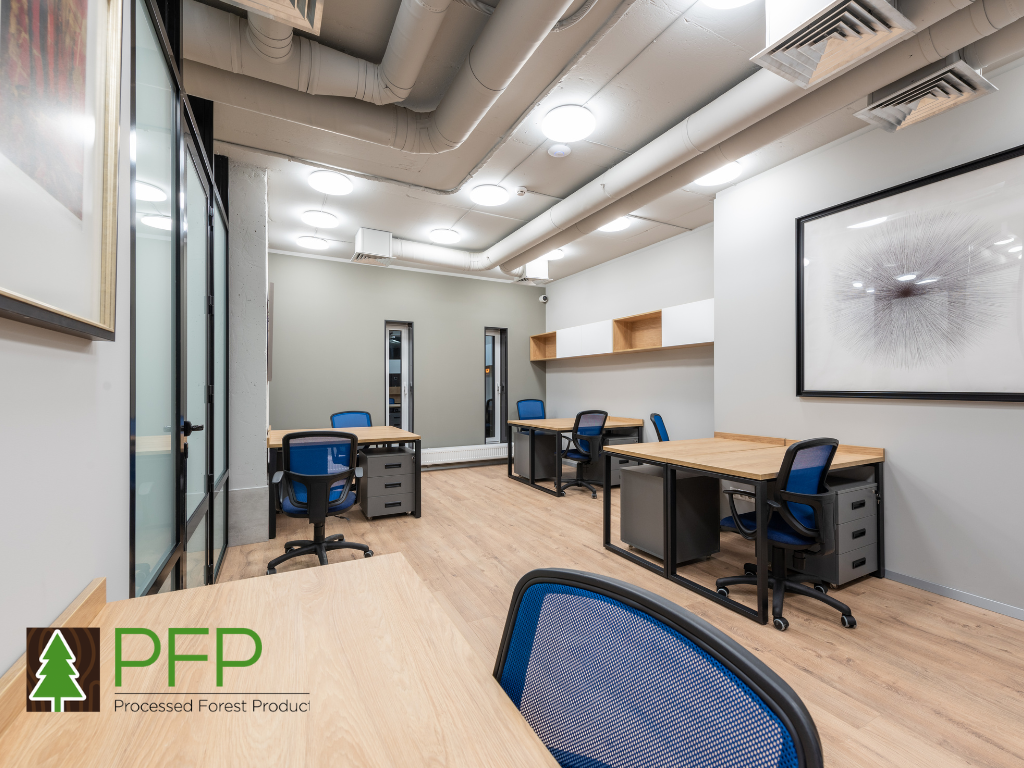
Regular Care Routine
Maintaining the appearance and longevity of timber veneer in office environments requires a regular care routine. Dusting veneer surfaces with a soft, dry cloth can prevent the buildup of dirt and debris that may scratch the finish. For cleaning, use a damp cloth with mild soap, avoiding harsh chemicals or abrasive cleaners that can damage the veneer. Periodically, apply a thin layer of natural wax or polish formulated for veneer to enhance its shine and protect the surface.
Repair and Restoration
Wear and tear or damage to timber veneer furniture and fixtures is inevitable over time. Minor scratches can often be buffed out with a soft cloth and a bit of veneer polish. For deeper scratches or chips, a professional repair kit designed for timber veneer can be used to fill and color-match the damaged area. In cases of significant damage, consulting a professional who specializes in veneer restoration is recommended to ensure the repair is seamless and maintains the piece’s integrity.
Conclusion
Incorporating timber veneer into modern office design offers a unique blend of beauty, functionality, and sustainability. Its natural elegance, coupled with the versatility in application and design, makes timber veneer an ideal choice for creating spaces that are both aesthetically pleasing and conducive to productivity. The material’s sustainability further aligns with contemporary values, emphasizing environmental responsibility without compromising on style or quality.

